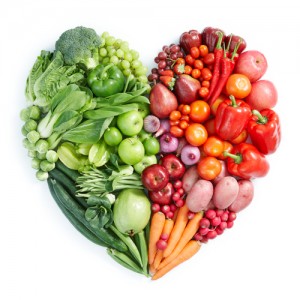Eating in Our Modern Era
February 7th, 2015 Did you ever wonder why we eat the way we eat now? Breakfast for most people is a light meal, lunch a bit heavier, and dinner is chock full of calories and heavy in meat protein. Our eating habits are remnants of the agricultural life led by our ancestors. Imagine a farmer who gets up just before dawn and does physical labor in the morning before the heat sets in. Then he or she may rest around noontime when it was too hot to work and resume working in the 2-3 hours before sunset. The meals that most of us eat currently would be perfect for this type of lifestyle. The problem is, most of us sit at desks all day long and are just as sedentary after we get home. I would argue that our society is becoming more obese because we are not adapting our diets for the (lack of) level of physical exertion that has become part of our daily lives. Your body is a like a bank for calories.
Did you ever wonder why we eat the way we eat now? Breakfast for most people is a light meal, lunch a bit heavier, and dinner is chock full of calories and heavy in meat protein. Our eating habits are remnants of the agricultural life led by our ancestors. Imagine a farmer who gets up just before dawn and does physical labor in the morning before the heat sets in. Then he or she may rest around noontime when it was too hot to work and resume working in the 2-3 hours before sunset. The meals that most of us eat currently would be perfect for this type of lifestyle. The problem is, most of us sit at desks all day long and are just as sedentary after we get home. I would argue that our society is becoming more obese because we are not adapting our diets for the (lack of) level of physical exertion that has become part of our daily lives. Your body is a like a bank for calories.
I understand that meals are means of social bonding and are ingrained in our daily routine. I would recommend trying to make a few adjustments.
- Eat a heavier lunch than dinner. Most times after dinner we sit around and watch TV, or use electronic devices such as tablets. These activities barely burn any calories.
- Increase protein and calories for breakfast. Many studies have shown that the body likes to start the day off with protein. Try adding some fat-free Greek yogurt or egg white omelet to your breakfast, and you will notice you will be less hungry at lunchtime.
- Reduce the amount of carbohydrates at dinner time. Complex carbohydrates such as breads, noodles, potatoes and rice are the body’s ideal food to store up energy. Taken too late at nighttime, this can lead to weight gain.
- Eat dinner earlier. By eating earlier, you increase the chances that you will be able to burn off some calories eaten at dinner. Late night eating can also lead to reflux (GERD) and for poor sleep.
- Try the Mediterranean Diet. It not only is delicious, but can reduce your risk of heart disease and diabetes.
